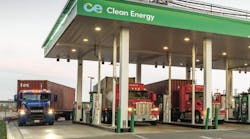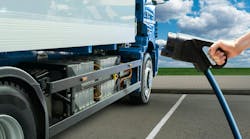Often times when the talk turns to infrastructure, it focuses on the state of infrastructure in the United States, which by most accounts is in need of a significant upgrade.
However, other countries have their own issues with their highways, secondary roads and bridges. The Canadian Trucking Alliance recently released a wish list of infrastructure improvements it would like to see made in Canada. How important is maintaining the Canadian infrastructure? Consider this: In 2018, trade between Canada and the U.S. was estimated to be $714.1 billion, with approximately two-thirds of all good moved by trucks. This figure does not contain the amount of goods that flowed across Canada.
Truck parking and border capabilities were among the items on CTA’s list. The list also included specific projects that need funding in Quebec, Eastern Canada, Northern Ontario, Manitoba and British Columbia among others.
The amount of freight moving through Canada keeps growing and one of its main limiting factors is the condition of the infrastructure, according to Pierre Bujold, vice president of our Canadian operations. “All systems (physical and technological) must interconnect to support growth and reliability of goods movement.”
CTA acknowledges that infrastructure improvements come with a price tag. “We realize funding required to upgrade these updated systems is significant, but such investment is dwarfed by the immediate and long-term damage the economy would suffer if these investments are not made,” the alliance said.
I was speaking with Bujold recently and he said the infrastructure wish list is only one piece of the puzzle for making trucking in Canada more efficient.
“The entire road-base trade connects to so many facets of the supply chain that road infrastructure cannot be the only component needing attention,” Bujold said.
Other areas that Bujold is concerned about include the following.
ELDs are good for the industry, but adjustments will have to be made as Canadian fleets integrate them into their operations. There is a likelihood that with the implementation of ELDs that there will be some impact on the number of stops drivers make.
The driver shortage is having an impact at the border and proper funding must be available to optimize the infrastructure across the entire Canadian-US border. In addition, new solutions need to be found to deal with the shortage of qualified drivers.
Fleets need to deal with OEMs constantly developing new products, services and technology that allow minute-by-minute views of the condition of equipment, location of trucks and real time information on when those trucks will arrive at their scheduled destination. Keeping up with the rapid pace of technology places an additional burden on fleets.
Hiring and training technicians to keep up with all these technological advancements is of critical importance and remains equally challenging as the driver shortage.
Maintaining a nation’s infrastructure may be only one of the issues that need to be addressed in order to ensure the smooth movement of goods across, but it is one of the most critical. And whether in the U.S. or Canada, funds need to be found to make the necessary repairs and upgrades to roads and bridges in order to keep the economy moving.



